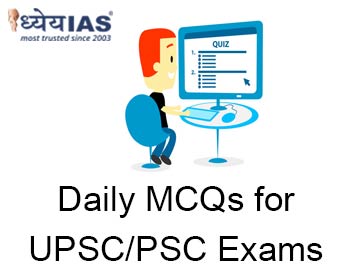Home > Daily-mcqs
Daily-mcqs 05 Apr 2025

Q1:
Consider the following statements regarding the H5N1 virus: How many of the above statements are correct?
A: Only one
B: Only two
C: All three
D: None
Answer: A
Explanation:
Q2:
Consider the following statements regarding the Coastal Shipping Bill, 2024: How many of the above statements are incorrect?
A: Only one
B: Only two
C: All three
D: None
Answer: B
Explanation:
Q3:
Which of the following best describes Kannadippaya?
A: A type of traditional embroidered shawl from Himachal Pradesh.
B: A unique reed bamboo mat with a reflective surface crafted by tribal communities in Kerala.
C: A silk-based textile product that originates from West Bengal.
D: A metal craft popular in the Chhota Nagpur Plateau region.
Answer: B
Explanation:
Kannadippaya is a unique reed bamboo mat with a reflective surface crafted by tribal communities in Kerala. It derives its name from its mirror-like reflective surface (Kannadi = mirror, Paya = Mat).
Q4:
Which of the following best describes Nationally Determined Contributions (NDCs)?
A: Legally binding global agreements for carbon neutrality.
B: Voluntary climate action plans submitted by countries under the Paris Agreement.
C: Financial pledges made by developed nations to support developing countries.
D: A set of economic policies aimed at reducing trade barriers.
Answer: B
Explanation:
Q5:
Consider the following statements regarding poverty reduction in India: How many of the above statements are correct?
A: Only one
B: Only two
C: All three
D: None
Answer: B
Explanation: